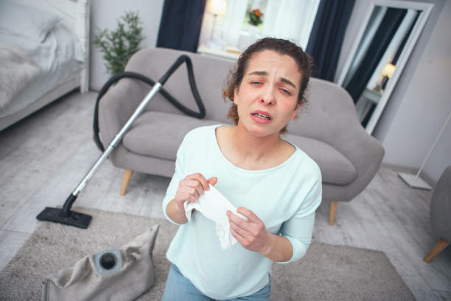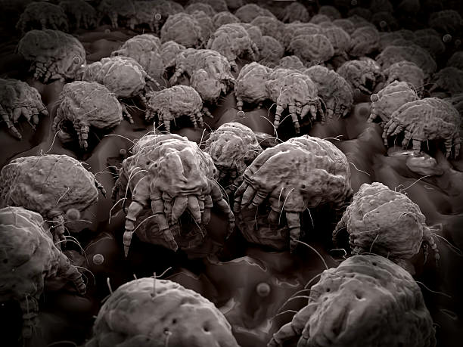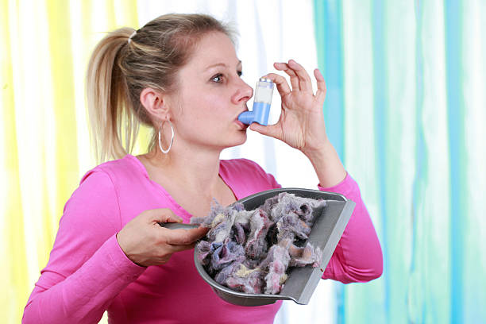Dust Allergies
Causes, Symptoms, Treatment, and Side Effects of Dust Allergies
Dust Allergies Overview
Ever get sneezing, coughing, and itchy eyes while dusting your door, furniture, or windows?
While dusting your home or mart, almost everyone gets irritated by the tiny dust particles that get in the air. But, it converts to more of a concern for people with a dust allergy. It shows the same allergic sensitivity as specific to pollen or dander allergy. It also exhibits the same symptoms of itchy eyes, runny nose, or at worse, even asthma.
There are tiny creatures called dust mites that survive in dust particles often produced in humid and warm places. In homes, it is particularly found in beddings, furniture, and carpets, which provide an excellent environment for dust mites to produce rapidly.

Surveys have shown that, roughly, 20 million Americans suffer from dust allergies and asthma each year. As dust is available throughout the year, it’s not pertained to a specific time of the year so that people can be attacked effortlessly anywhere at any time.
What Causes Dust Allergies?
Often allergies are caused by the triggering of a foreign particle, which our immune system may not accept. These allergens, when inhaled or eaten, get recognized by the system and cause allergic reactions.
Dust mites and their byproducts: are the main cause of dust allergy. These are small bugs present throughout where dust might be. These dust mites are microscopic and mostly feed on human dead skin which we shed on a daily basis and can feed millions of dust mites at one time. Not the dust mites alone, but their skin, feces, and body parts also act as allergens for human beings.
A single piece of dust may contain pieces of dead cockroaches, mold spores, dead skin, and pet dander along with dust mites. Pet dander and cockroaches, both trigger allergies in people with allergy sensitivity when inhaled.

What Are the Symptoms of Dust Allergies?
While dust can provoke anyone to start sneezing due to particles stimulating your nostrils, it doesn’t mean that you might have a dust allergy. Severe symptoms that may show your resentment to dust may be mild or worse, depending on your situation. People with dust allergies show symptoms throughout the year. Following are the most common indications for dust allergy,
- Sneezing
- Red, itchy and watery eyes
- Shortness of breath, coughing, wheezing
- Runny nose, flu
- Itching over body
- Dry throat
- Under-eye puffy or discolored
- Sinus problem
How to prevent Symptoms: The best way to prevent symptoms of dust allergy is to refrain from the exposure of dust or dust stimulating regions.
To start with, make sure to treat your bed where most of your time is spent. Millions of dust mites can accumulate in beddings, mattresses, and furniture.
Always wear a mask while cleaning or getting exposed to dust.
Dust busting tips for your room: Make sure to keep your room airtight. Put plastic dust mite covers to your pillows and mattress. You can even find dust-mite proof covers in the market. Pillows filled with polyester fibers are less prone to dust. Beddings should be changed weekly and washed in very hot water over 130F. Dry in a hot dryer or give exposure to sunlight to kill dust mites.
How to Treat Dust Allergies
The best treatment for dust allergy is to keep yourself away from dust. If that’s not possible or not working, an abundance of countertop or prescribed medications can help reduce the symptoms.
Allergy Medicines
You may be prescribed allergy medications to treat the nasal allergy symptoms similar to common flu.
- Antihistamines treat allergic rhinitis and some other allergies. It is an inexpensive generic drug that relieves symptoms of hives, congestion, or sneezing due to dust, dander, or pollen allergy. It doesn’t have numerous side effects and is safe to use. It may be available in the form of tablets or nasal sprays.
- Decongestions help in shrinking swollen tissues of your nasal passage, making it easier for you to breathe. Some allergy tablets are combined with antihistamine and decongestants, which can be used in allergic symptoms. However, decongestants can cause blood pressure to increase, so should not be taken by people with cardiovascular disease.
- Corticosteroids help in reducing inflammation and immune system activity. They ease itching, swelling, redness, and allergy reactions and are often prescribed by doctors for the treatment of people with the symptoms of asthma.
- Montelukast is in tablet form, which helps in blocking the action of specific immune system inflammatory chemicals that the body may release after in contact with an allergen or it’s triggered. These are Leukotrienes that tighten the airway muscles and produce excess fluid and mucus.

Other Dust Allergy Treatments
- Nasal irrigation: You should use a spray bottle or a specially made squeeze bottle with packed saltwater (saline) rinse to clear thickened mucus and irritants from the sinuses. Use water that is pollutant-free — purified, clean, freshly boiled and cooled, or filtered using a strainer that has an absolute aperture size of 1 micron or smaller, if you will be making the saline solution yourself. Make sure the irrigation system is rinsed with contaminant-free water with each usage, then leave it open to air-dry.
- Immunotherapy: You can teach the immune system to prevent being susceptible to an allergen. This is achieved by a series of so-called immunotherapy allergy shots. One or two weekly injections will subject you to very low amounts of the allergen, the dust mite proteins that trigger the allergic reaction in this situation. The dosage is slowly increasing, typically over a span of three to six months. For three to five years, maintenance shots are expected every four weeks. Immunotherapy is commonly used in cases where other specific therapies are not appropriate.
Conclusion
Dust allergy can be annoying, but with proper protection and preventive measure, those irritating symptoms be prevented. Remember to take drugs that suits you, because you don’t need any side-effects to make it worse. Dust allergy can be cured, and with determination, it can be over in a year.
Written by: Madiha Ather Hashmi (May 15, 2020)
Sources
- ACAII (2018). “Dust Allergy”. American College of Allergy, Asthma & Immunology.
https://acaai.org/allergies/types/dust-allergy - NHS (2014). “Prevention”. Crown.
https://www.nhs.uk/conditions/allergies/prevention/ - MedicalNet (2014). “8 Ways to Get Rid of Dust Mites”. MedicalNet.
https://www.medicinenet.com/script/main/art.asp?articlekey=20276
Medically Reviewed By

Alexandria University Hospital
I have reviewed the articles on seasonalallergies.org and I would like to say that I was very surprised.
Over years, I have seen many different articles in the field of allergy, but these articles were very interesting.
These articles were really unique, they could help many people around the world to know more about seasonal allergy, symptoms, prevention and when to seek medical advice.
These articles represent an addition in the field of Health Education not only for people with allergy but also for the whole population.
Looking for more allergy types? Find a full list of other allergy causes here.
Last Updated on July 5, 2023